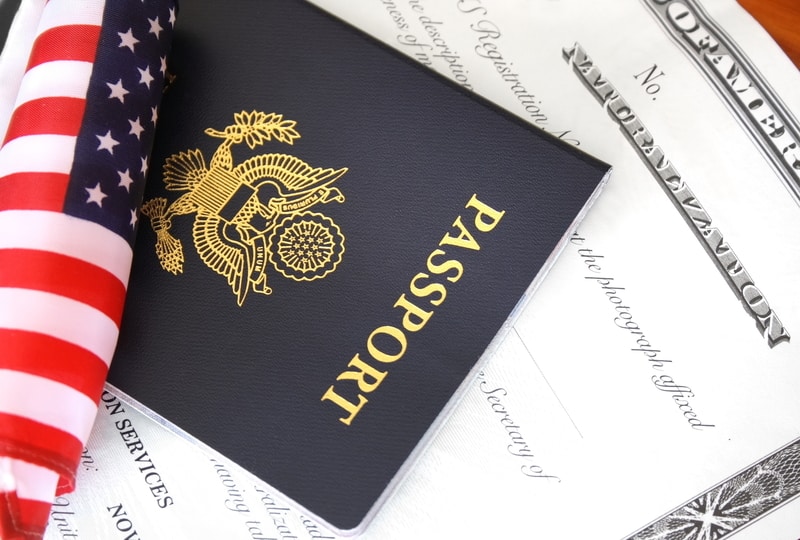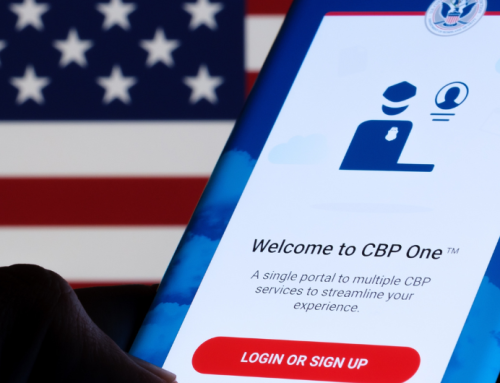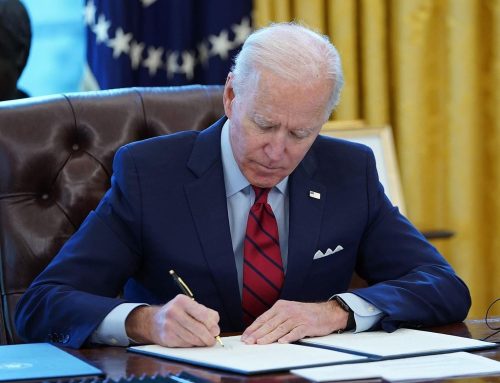Best Ways to Bring Your Spouse to the USA
Historically, family reunification has been the easiest and fastest way of bringing your loved ones to the United States. If you are a United States citizen married to a foreign national, and you want to sponsor your spouse’s immigration, you are probably wondering what the best and fastest way to do it is. This is not an easy question. In some cases, the fastest way to bring your spouse to the United States may not be the best one, and a mistake can lead to unfavorable consequences for your family. This section will help answer some of the basic questions you may have. However, you should be careful and talk to an experienced immigration lawyer about your specific case in order to avoid any potential problems and complications.
Immigration for Spouse Who is in the United States / Adjustment of Status (AOS)
If your foreign spouse is in the United States, yours spouse may file for adjustment of status (green card) at the same time when you file your Petition for Alien Relative for your spouse. Note that you can do that even if your spouse does not currently have a valid immigration status or violated their status, as long as he or she entered the United States legally and as long as you are a US citizen. Your spouse can also apply for employment authorization (work permit) and travel authorization (travel document) at the same time.
Provided that you file everything correctly and your case does not encounter problems, your spouse may receive his or her green card as soon as in 8-12 months. The process may last longer. Currently, the USCIS is trying to avoid scheduling interviews if you provide all of the required information and documents at the time of filing. Eliminating the need for interview can save you months of processing time, and your spouse can receive their green card much faster. Therefore, it is crucially important to properly prepare all forms and supporting documentation from the beginning. Your foreign spouse will be able to work in the United States and travel outside the United States while their immigration process is pending. Currently, adjustment of status provides a faster immigration process compared to consular processing, and the adjustment applicants can remain in the United States during the process. In addition, an adjustment of status applicant does not have to obtain police clearance records from abroad, as applicants for consular processing do. However, in order to be eligible for adjustment of status an applicant must be physically present in the United States, which could present a difficulty for some applicants.
If your spouse leaves the United States BEFORE you file for his or her immigration, he or she will not be able to adjust his or her status to a permanent resident at the same time when you file your I-130 petition. Instead, he or she may need to wait, while living abroad, until your petition is approved, and then undergo consular processing and receive an immigrant visa at the United States Embassy or Consulate in his or her country. This can cause lengthy separations. As of July 2023, the entire process of Consular Processing takes approximately 18 months. Please see next section, Immigration for Spouse Who Is Abroad, for more information.
If your spouse leaves the United States while his or her adjustment of status is pending, without first securing advance parole travel permission, his or her adjustment application will be considered abandoned (unless he or she is an H or L visa holder and maintains H or L status). In addition, foreign spouse who leaves the United States while his or her adjustment of status application is pending, may trigger 3- or 10-year bar, which prohibits him or her from entering the United States for 3 to 10 years, if he or she had accrued more than 180 days (approximately 6 months) of unlawful presence in the United States. While advance parole also does not guarantee that such immigrants will be able to enter the United States after an absence, recent legal precedent has been in favor of advance parole holders with pending adjustment of status applications.
Related: Why Should I Hire a Lawyer for my Marriage-Based Adjustment Case?
Immigration for Spouse Who is Abroad / Consular Processing
If your spouse lives abroad, or if he or she left the United States before you filed for his or her immigration, your foreign spouse will need to go through consular processing.
The process of sponsoring your spouse through US consulate abroad consists of three stages. First, you, the U.S. Citizen, need to file form I-130, petition for alien relative, for your spouse. This petition is filed with the USCIS in the United States, unless the US consulate in the country where you are located, allows to file directly with the consulate. If you file correctly, and your case doesn’t encounter serious problems, the I-130 petition takes approximately 10-12 months to be decided on. Sometimes, it may take much longer. After your I-130 petition is approved, the case is then transferred to the US Department of State, National Visa Center (NVC). NVC typically sends you a notice via email asking you to pay online fees, file additional online forms, and to submit additional documents online to the NVC. You and your spouse will need to upload additional documents, including affidavit of support for your spouse, police certificates, and biographical documents. After the NVC collects all the required documents, the NVC sends you a notice confirming that they got everything they need and, that they will transfer the case to the US consulate handling immigrant visas for the citizens of your spouse’s country. Eventually, your spouse will be invited to the United States consulate in his or her country for an immigrant visa interview. At this point, your spouse will need to undergo medical examination. If granted a visa, he or she will be admitted to the United States as permanent resident and receive green card in the mail after arrival in the United States. The immigrant visa will be valid for 6 months. During the next 6 months after the approval of the visa, your foreign spouse must enter the United States. Once he or she enters the United States, your spouse will become a permanent resident. As of March 2024, a consular processed spousal immigrant visa case takes between 12-18 months.
Adjustment of Status (AOS) vs. Consular Processing

Immigration concept, US passport and flag over a citizenship and naturalization certificate
AOS is preferable over Consular Processing in all aspects. First, AOS takes relatively less processing time (currently 8-12 months), where the process through a consulate takes 18-24 months, sometimes more. Second, the immigrant spouse can remain in the United States during the AOS processing of the case and can obtain a work permit shortly after filing the forms and documents. While, during the Consular Processing, the immigrant spouse is often stuck abroad and is not allowed to enter the United States until the process is over. Third, the entire AOS processing goes through a single government agency – USCIS, thus limiting the chances of the extra delays or loss of documents in transition between different bureaucratic government agencies. All forms and documents are filed and processed together. Meanwhile, the process of sponsoring your spouse through a US consulate involves the Department of Homeland Security, the Department of State National Visa Center, and the US consulate abroad. Additionally, you do not have to produce any foreign police certificates if you are adjusting your status in the US, while when you are going through the Consular Processing, you must produce police clearance certificates from every place in the world, where you lived longer than 6 months after you turned 16. In some countries this may cause serious challenges or delays.
In short, AOS is always preferable over the consular processing. But AOS is not always available, because, quite often, the foreign spouse is located outside of the USA. Unfortunately, the US immigration laws do not have a procedure allowing the foreign spouse to enter the US using a non-immigrant visa, in order to adjust his/her status, except for K-3 visas, which cause more problems than help. Therefore, our word of advice is as follows – if your spouse is in the US when you decided to get married or when you decided to sponsor your spouse’s immigration in the US, you should apply through AOS instead of Consular Processing. Contact us as soon as possible to discuss your case.
K-3 Visas
Understandably, many people want to be able to live with their spouse in the United States while their foreign spouse’s immigration petition is pending. For that purpose, the US immigration laws contain a provision for the K-3 visa. K-3 is the visa for spouses of U.S. citizens; it allows the foreign spouse to come to the United States while the I-130, petition filed by the U.S. citizen, is pending. K-4 is the visa for minor children of spouses; it allows children to come to the United States with their parent who is married to a U.S. citizen. K-3 and K-4 are considered non-immigrant visas, but they allow their holders to adjust their status to permanent residents in the United States and receive green cards. However, the K-3 visa process did not meet its intended goals. Unfortunately, the K-3 visa process itself takes a same or even longer amount of time than the immigrant visa process, thereby even potentially delaying the process rather than helping. K-3 visas have been useless for over a decade, and unless there is some kind of a reform, it has no use.
K-3 / K-4 Visa Process
If you want to obtain a K-3 visa for your foreign spouse, you first need to file Form I-130, petition for alien relative, with USCIS. You will then receive Form I-797, Notice of Action, indicating that USCIS has received your Form I-130 filed on behalf of your foreign spouse. Then you need to file Form I-129F, Petition for Alien Fiancé (even though you are already married to your spouse), and include copies of your I-130 receipt and marriage certificate. There is no fee to file Form I-129F when filed after I-130 for a non-citizen spouse’s K-3 visa.
Minor children of foreign spouses should be listed on Form I-129F so that they would receive K-4 visas. Although separate Form I-130 is not required for a child, USCIS recommends filing one concurrently with the I-130 for the spouse, because without an approved I-130 the child cannot immigrate if I-130 for the spouse is approved before the I-129F for both.
If Form I-129F is approved, USCIS will forward it to the U.S. Department of State for consular processing. For more information, please see the Department of State website: Nonimmigrant Visa for a Spouse (K-3).
Benefits of K-3 / K-4 Visa
Once admitted to the United States, K-3 visa holders may apply to adjust status to a permanent resident with the USCIS at any time. Upon admission to the United States, K-4 visa holders may file an application for adjustment of status concurrently with or at any time after a Form I-130 has been filed on his or her behalf by the U.S. citizen petitioner.
Upon admission, K-3 and K-4 nonimmigrant visa holders may obtain employment authorization. Upon filing an application for adjustment of status, K-3 and K-4 nonimmigrant visa holders may also apply for employment authorization based on that pending application even if the K-3 or K-4 nonimmigrant status expires.
Limitations of K-3 / K-4 Visa
When both petitions, I-130 and I-129F, have been approved by USCIS and sent to the National Visa Center (NVC), or when USCIS approves the I-130 before the I-129F, the availability of, as well as the need for, a nonimmigrant K-3 visa ends. If the NVC receives both an approved I-130 petition and an approved I-129F petition, the following occurs:
The nonimmigrant K-3 visa case will be administratively closed.
The K-3 non-immigrant visa application process will not be available to the foreign-citizen spouse and cannot be used.
The NVC will contact the U.S. citizen sponsor and foreign-citizen spouse with instructions for processing the immigrant visa.
In theory, K-3 visa provides the opportunity for U.S. citizens and their foreign spouses to live together in the United States while the foreign spouse’s immigration process is pending. However, in reality, the processing of I-129F petitions necessary for K-3 visas usually takes nearly as long as the processing of the I-130 petitions needed for immigration. Therefore, at present, it usually makes sense to file for K-3/K-4 visa only as insurance, in case the processing of I-130 petition gets extremely delayed. In normal circumstances, when the I-130 petition is approved within a reasonable timeframe, the foreign spouse can immediately undergo the consular processing and enter the United States as a permanent resident, thus eliminating the need for K-3 visa as well as the need to go through adjustment of status process in the United States.
Avoiding Potential Problems while bringing the spouse to the US
The immigration process for a foreign spouse living abroad may seem long and complicated, and people often wonder if there is a way around it. Sometimes, couples think that it would be easier and faster if the foreign citizen comes to the United States on a visitor’s or tourist visa, marries the U.S. citizen, and adjusts his or her status in the United States. For couples who are already married, there is a temptation for the foreign spouse to come to the United States as a visitor or tourist and adjust her status in the United States. However, doing so can be dangerous and have very serious consequences for the foreign spouse’s immigration.
Immigrant Intent
One potential problem with foreign spouses trying to obtain non-immigrant visas and/or enter the United States using such non-immigrant visa or on Visa Waiver Program is the so-called “immigrant intent”. A person who applies for a non-immigrant visa must prove that he or she does not have “immigrant intent”, meaning that he or she does not plan to stay in the United States and live in the United States permanently.
For that reason, your foreign-citizen spouse may not be able to receive a non-immigrant visa to visit the United States while his or her immigrant petition is pending. The fact that the applicant for a tourist or visitor visa is married to a U.S. citizen, especially if he or she already has a pending immigrant petition, creates a presumption of “immigrant intent”, which makes the applicant likely ineligible for a non-immigrant visa.
Similarly, U.S. Customs and Border Protection (CBP) inspectors may deny entry to the United States to a non-immigrant visa holder for the same reason – presumed immigrant intent resulting from marriage or even engagement with a U.S. citizen or green-card holder.
A foreign spouse trying to enter the United States on a valid non-immigrant visa issued prior to the marriage can be still be denied admission, if it surfaces that he or she is married to a U.S. citizen, thus creating a presumption of “immigrant intent”.
Foreign spouse of a U.S. citizen may be able to obtain a non-immigrant visa to visit the U.S., if he or she is able to show that he or she does not currently plan to immigrate to the U.S. For example, if both spouses live and work abroad and plan to return to their country of residence after a temporary visit to the United States, the foreign spouse may be able to obtain a visitor’s visa.
Visa Waiver Program / ESTA
If your foreign spouse does not need a visa to enter the United States – for example, he or she is from a country participating in the Visa Waiver Program – it may seem that he or she can enter the United States and adjust status based on his or her marriage to the U.S. citizen. However, a Customs and Border Patrol officer inspecting the foreign spouse at U.S. border can deny him or her admission to the U.S. on Visa Waiver Program, if the officer determines that the foreign spouse has immigrant intent.
Generally, when a person enters the United States on Visa Waiver Program, he or she is expressing intent to leave within 90 days. For that reason, a Visa Waiver entrant would generally not be able to file for adjustment of status, even within the permitted 90 days of stay. However, there is an exception for filing as an immediate relative, such as spouse, of a U.S. citizen. In other words, if you entered the United States under a Visa Waiver Program also known as ESTA, you can adjust your status in the United States if you are married with a US citizen.
Preconceived Intent
If your foreign spouse enters the United States as a non-immigrant, or through Visa Waiver Program, and then seeks to adjust status, he or she may encounter problems because of the so-called “preconceived intent”.
“Preconceived intent” means that the applicant intended to immigrate to the United States, and misrepresented his or her intent to immigration authorities in order to get a non-immigrant visa or enter the U.S. as Visa Waiver entrant.
History of “Preconceived Intent” Rule
90 Day Rule: Under this rule, if a non-immigrant’s actions within 90 days of their entry into the US are inconsistent with the original stated purpose, then there should be a presumption of willful misrepresentation.
However, there is favorable court precedent and subsequent USCIS policy manual stating that immediate relatives (such as children, spouses or parents) of U.S. citizens are exempt from the “preconceived intent” consideration. For example, in Matter of Cavazos (BIA 1980), the Board of Immigration Appeals (BIA) reversed an immigration judge who denied adjustment to the spouse of a US Citizen solely on the basis of preconceived immigrant intent. There, the BIA held that in the case of immediate relatives seeking a grant of adjustment of status, the regulations essentially negated “preconceived intent as an adverse factor in a meritorious case.” In other words, if the only adverse factor is a preconceived intent, immediate relative adjustment applications should be granted.
It is important to note that there are some issues relating to the decisions in Matter of Cavazos and the case following it, Matter of Ibrahim (BIA 1981). In Matter of Ibrahim, the BIA held that in the absence of other adverse factors, an application for adjustment of status as an immediate relative should generally be granted in the exercise of discretion notwithstanding the fact that the applicant entered the US as a nonimmigrant with a preconceived intention to remain. However, the BIA also held that the benefits of Matter of Cavazos are limited to immediate relatives, and an application for adjustment of status by a preference immigrant who entered the US as a nonimmigrant with a preconceived intention to remain was properly denied in the exercise of discretion. Nowadays, relying on Matter of Cavazos and Matter of Ibrahim can be tricky, because:
1) these cases are quite old, and often USCIS examiners are not aware of their existence; and
2) there have been a number of recent cases—involving Visa Waiver entrants and other non-immigrants—in which preconceived intent was one of several factors considered in denying adjustment, and the consequences were quite severe.
Even though the preconceived intent rule generally does not apply to the US Citizens’ immediate relatives, there still can be repercussions for misrepresenting their intentions to officials or admitting at the interview that they had preconceived intent. As mentioned above, the consequences could be quite severe. For example, a visa waiver entrant whose adjustment is denied based on preconceived intent in conjunction with other factors is unable to appeal or challenge that denial as a result of entering under the Visa Waiver Program, and if that person is subject to the re-entry bars under INA §212(a)(9)(B) as a result of a visa overstay, the person would not be eligible to consular process without a waiver.
In regard to the denials, there have been no recent cases in which preconceived intent was the sole basis for the denial of the adjustment application—the denial always found other culpable conduct. In one case for example, the denial was based on a combination of preconceived intent and alien smuggling, and so the BIA’s departure from its usual policy and case law was justified (Mamoka v. INS, 1995; Matter of Patel, 1988, citing Matter of Lasike, 1980). In Matter of Patel, the deportation was upheld where alien refused to depart after denial of adjustment of status to special immigrant minister because none of his documentary evidence established that he had been carrying on vocation of minister of a religious denomination for two years prior to denial of application; discretionary denial of adjustment based on preconceived intent was also upheld where alien applied for “ministerial recognition” only 11 days after entry with tourist visa and five months later obtained “Christian Worker’s Certificate” entitling him to conduct religious services, letter of recommendation for ministry overseas predated his entry, and he started employment immediately upon entry but falsely stated in his request for extension of tourist visa that his intent was only to continue in his visitor status.
Therefore, most USCIS field offices do not raise the preconceived intent issue when it comes to immediate relatives of U.S. citizens, and most adjustment applications filed by spouses of U.S. citizens are granted, provided that if their only adverse factor is preconceived intent, and not a combination of preconceived intent and other culpable conduct.
If you want to avoid anxiety and uncertainty of handling your own case, you have come to the right place. On this website, we have assembled useful information, resources and tips, and information on our law firm’s practice areas. The information provided on this website is not a legal advice and does not create attorney-client relationship. We try to expand and update the information and content on our website, by frequently adding new resources, tips, guides, and Q&As. However, every case has its own individual nuances, facts and circumstances. Therefore, it often becomes necessary to consult directly with a qualified attorney, who can answer your questions, explain your options, and give you legal advice and recommendations. You can schedule such a consultation with one of our excellent attorneys by either calling us at +1-703-527-1779 or e-mailing us at [email protected] or directly using this link: Schedule a Consultation.
Frequently Asked Questions:
Question: My wife lives in UK. We plan to visit my parents in the US for holidays. If my wife enters with UK passport, under Visa Waiver Program, can I sponsor her here and go through Adjustment of Status Process?
Answer: As long as, you make such decision after your wife enters the US, you can sponsor her here in the United States and she can adjuster her status.
Question: I entered with Visa Waiver Program and overstayed in the US. Now I am married with US citizen. Can I adjust my status?
Answer: Yes. As long as your marriage is legitimate and you are not otherwise inadmissible, you can file for adjustment of status in the US.
Question: I entered as a tourist and overstayed my visa, can my citizen wife sponsor me?
Answer: Yes. As long as your marriage is legitimate and you are not otherwise inadmissible, you can file for adjustment of status in the US.
Question: I have a child from previous marriage, can my US citizen spouse sponsor my child?
Answer: If your marriage with your US citizen spouse took place before your child turned 18, then your US citizen spouse can sponsor your child as well. Your spouse needs to file a separate petition for your child before your child turns 21.
Question: I am filing for adjustment of status. My current passport expired. Do I need to renew it?
Answer: You do not need to renew your passport for adjustment status. You will need to renew it if you plan to travel. You need to contact your country’s embassy in the US and find out if they can renew it here. Some embassies issue a temporary travel document allowing you to return to your home country to renew your passport. But, to answer your question, you do not need to have an unexpired passport to be able to adjust your status in the US.
Question: Can I petition for a family member or spouse living outside the United States while I am also living outside the United States?
Answer: A United States Citizen or Permanent Resident may file a petition for an immediate relative while living abroad. However, the sponsoring spouse must be able to prove to the National Visa Center and the selected Embassy that they are still domiciled in the United States. This means that they must show that their time abroad is only temporary, and they will be returning to the United States before or upon the approval of the petition for their relative. Evidence must be provided to prove the Petitioner’s U.S. domicile. Examples of such evidence include maintaining a U.S. residence (mortgage statements, lease agreements, etc.), a job offer from a U.S. based employer, maintaining of U.S. bank accounts and other types of evidence that the sponsoring spouse will return to the US together with the immigrant spouse.
Question: If I sponsor my wife through consular processing, can I live there with her during the process?
Answer: Yes. You are not required to reside in the US during the process. You can be with your wife and return to the US together once the process is over.
Question: Do I have to be in the US when I file the petition for my husband?
Answer: No. There is no requirement to be in the US to be able to file a petition for your spouse. In fact, we can handle the entire process for you while you live abroad without a need for you to travel to the US.
Question: Is there a way to expedite my case?
Answer: Yes, the USCIS accepts expedite requests for urgent humanitarian reasons. It is not guaranteed, but anyone can apply as long as you have valid reasons.
Question: How soon after the consular interview do I have to enter the United States?
Answer: Immigrant visa is valid for six months. So, you will have six months to enter the United States.
Question: How soon will I receive my green card after the consulate interview?
Answer: It usually takes several weeks from the time you enter the United States.
Question: How long do I have to stay in the US after my first entry as a permanent resident?
Answer: You can stay as long as you want or you can leave any time you want. If you leave before you receive your green card in mail after entry, you can use your immigrant visa stamp to re-enter the US during the next 1 year from the date of your initial entry. In other words, once your immigrant visa in your passport gets stamped, it automatically becomes an equivalent of a green card for a period of 1 year. If you plan to leave the US for a period lasting longer than 6 months. you may want to apply for a Re-Entry Permit, which is an advance permission to leave the US for a lengthy period without losing your green card. See this detailed video about Re-entry Permit and how to avoid losing your permanent residency in the US due to lengthy or frequent absences: How long can a Green Card Holder stay Outside the US?
Selecting a competent and experienced immigration attorney is very important. We have over 17 years of experience handling family-based immigration cases and we will diligently handle each step of the process, identify, and neutralize any potential issues, and make your immigration experience as fast and smooth as possible. We have helped numerous families to reunite with their loved ones and we will be happy to help you. If you retain our firm to handle your case, we will give you a list of documents we need and list of questions we have, and we will handle the rest. We will prepare all forms, gather all required information and documents, we will prepare the filing package on your behalf, file it with the government agencies on your behalf, communicate with the government on your behalf, guide and prepare you for the successful interview process. Please use this link to discuss your case with one of our experienced immigration lawyers: Contact I.S. Law Firm.
NOTICE: The information contained on this page is intended to educate the general public and is not intended to provide legal advice. To ensure proper handling of your individual situation, please use this link to schedule a consultation: https://www.islawfirm.com/consultation/.
Article Information

Article Title: Best Ways to Bring Your Spouse to US
Short Description: Historically, family reunification has been the easiest and fastest way of bringing your loved ones to the United States. If you are a United States citizen married to a foreign national, and you want to sponsor your spouse’s immigration, you are probably wondering what the best and fastest way to do it is. This is not an easy question. In some cases, the fastest way to bring your spouse to the United States may not be the best one, and a mistake can lead to unfavorable consequences for your family. This section will help answer some of the basic questions you may have.
Author: Ismail Shahtakhtinski
Publisher - Orgnization: I.S. Law Firm, PLLC
Publisher Logo: 






